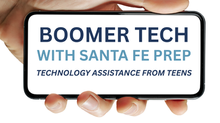Yoga and Chronic Medical Conditions
- Judith Rhodes

- Mar 3, 2022
- 2 min read
by Judith Rhodes, 500-hour Certified Kripalu Yoga Teacher
Yoga and Scoliosis: A Journey to Health and Healing, by Marcia Monroe
“

Yesterday is dead. Tomorrow isn’t born. We can only live in the present.” Yogi Amrit Desai
The essence of Kripalu Yoga is learning how to be fully present in the moment-to-moment experience of being alive. Practicing yoga posture and breath awareness teaches the practitioner to be fully present in the body. As practice deepens, these techniques cultivate powerful tools — health, psychological growth and awakening to higher potentials. The practitioner develops more keenly an awareness of the union of body, mind, and spirit. This awareness can also focus on dealing with chronic medical conditions such as arthritis, neuropathy, depression, scoliosis, and so forth — using yoga practices as a healing modality.
How to use a yoga practice to address the challenges of scoliosis was recently brought up in our online classes. I researched and chose a book, Yoga and Scoliosis: A Journey to Health and Healing, by Marcia Monroe (with a foreword by B.K.S. Iyengar, no less!). First and foremost was the instruction that because scoliosis is a medical condition, it should be monitored by a physician. Furthermore, “In yoga practice, this means developing a keen awareness of your own body, to the point of LEARNING both sides of the body in relation to themselves and your surroundings.” (Marcia Monroe)
The book offers suggestions for personal and group practice. Here are some highlights:
Establish a practice space that supports an inner engagement of the mind (clean, quiet, no distractions).
Twists should be mild and done in a chair or well-supported by blankets.
Because scoliosis should be viewed three-dimensionally, each side must be modified according to your condition to end up in a symmetrical position.
Touch is a powerful learning tool: noticing the contour of bones to determine what needs lifting, what is displaced, and what needs to move inward. In all positions, bodyweight should be evenly distributed left and right.
There are many more instructions, but I’ve listed just a few to whet your appetite. The author makes extensive use of props: yoga mat, several yoga blocks, blankets and cloths for feedback from both sides, blocks and pads (thick and thin), belts of varying shapes and sizes, wall ropes (a unique installation but helpful if you have them), chairs, stools, sandbags. These are suggestions, of course. You can build up your prop inventory as you proceed to work with the book’s photos and instructions — how to set up and move into and out of a posture.
The author, Marcia Monroe, has worked with scoliosis for decades. One success story was of a frail, older woman with a spinal curve of 114 degrees — idiopathic, rotatory, thoracolumbar scoliosis. Through a practice (and fortunately having a daughter who was a yoga teacher), three years later her C-curve measured at 68 degrees.
Wow! The message here is to keep moving! I would recommend starting slowly and figuring out how to work with the postures, props, and modifications on your own as your venture into a new and exciting way of working with ongoing medical challenges. Rock on!!
“‘I’ am immeasurably old: my forms are infinite and their comings and goings are simply the pulses or vibrations of a single and eternal flow of energy.” (Alan Watts)












































Comments